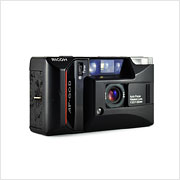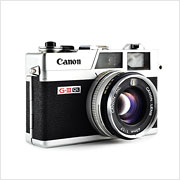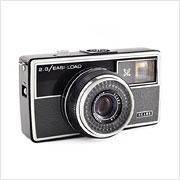Ricoh AF-60D
The Ricoh AF-60D is the data back equipped variant of the AF-60, one of half a dozen or so consumer grade autofocus point-and-shoot cameras introduced by Ricoh in the mid to late 1980s. This particular AF-60D—which was purchased by my father when I was a kid—has the distinction of being the first camera I have ever used. I remember going into my parents’ bedroom and digging the Ricoh out of my dad’s sock drawer. I remember looking through its viewfinder at the mirror and putting my finger on the shutter button like I had seen my dad do so many times. A click and whirr later, I ran away giggling.




